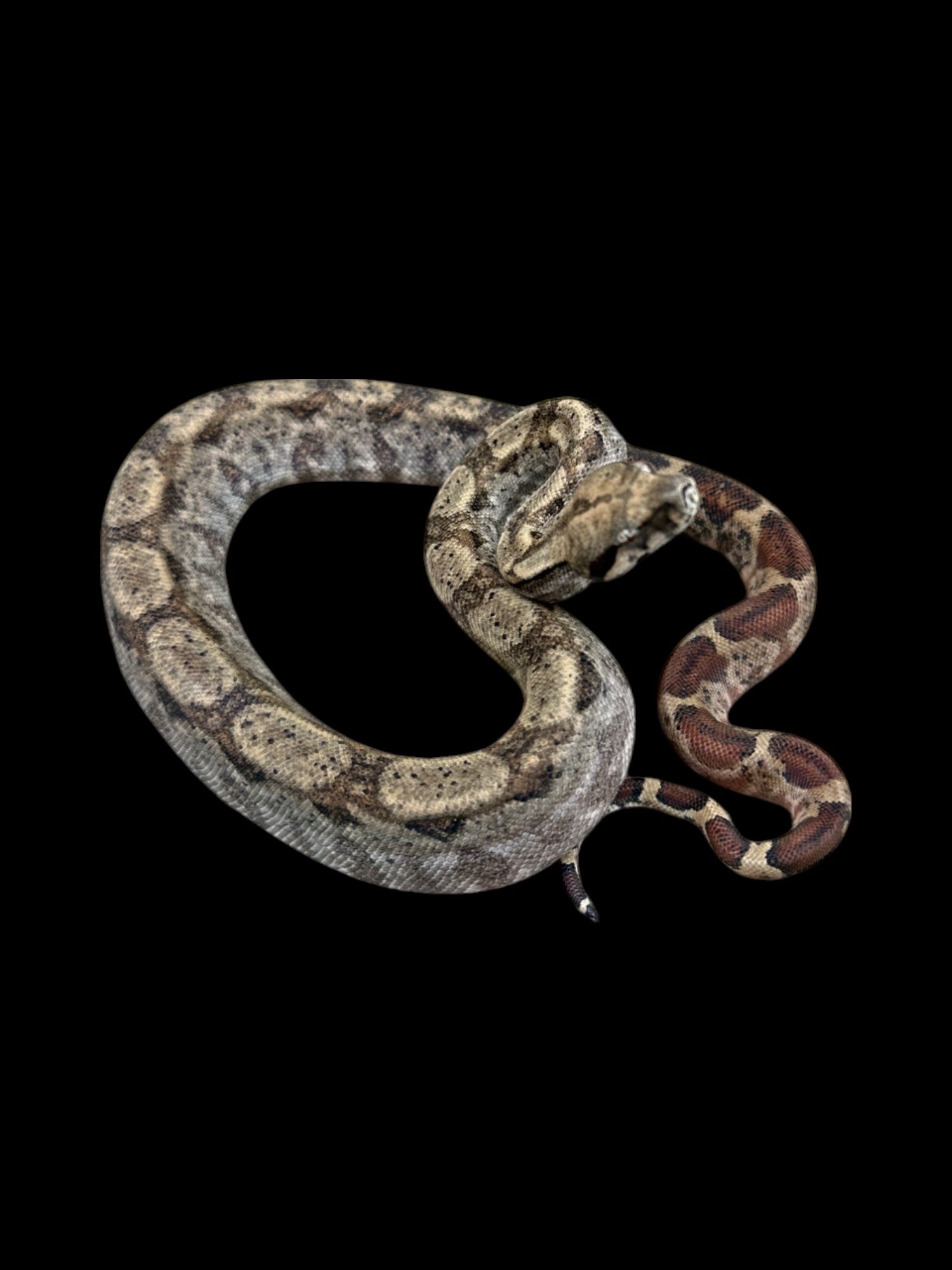Photo Disclaimer
Description
Boa Constrictor Imperator (BCI)
Boa constrictor imperator
Morph/Lineage: Hypo 66% Het Type 2 Anery (Nicaraguan Locality)
Species Overview
-
Size: BCI typically reach 6–8 feet (1.8–2.4 m), but Nicaraguan localities stay smaller, averaging 4–6 feet (1.2–1.8 m). They are more compact-bodied compared to Colombian BCIs.
-
Appearance: This boa expresses the Hypomelanistic (Hypo) trait, reducing black pigmentation and creating brighter contrast with lighter saddles and background tones. It is also listed as 66% Het Type 2 Anery, meaning it has a two-thirds probability of carrying the recessive Type 2 Anery gene without visually displaying it. The Nicaraguan lineage enhances contrast, with darker base colouration and more compact proportions.
-
Distribution: The natural Boa constrictor imperator is native to Central and South America, with Nicaragua recognized as one of its smaller-bodied localities.
-
Habitat: Nicaraguan boas inhabit tropical forests, scrublands, and riverine zones, adapted to regions with distinct wet and dry seasons.
-
Behaviour: Nocturnal ambush predators that feed on small mammals, birds, and reptiles. While juveniles may climb, adults are mostly terrestrial.
Captive Care
-
Enclosure: A naturalistic enclosure is recommended. Due to their smaller adult size, Nicaraguan boas thrive in 4′ × 2′ × 2′ setups. Provide climbing branches, cork bark, hides, and foliage. Bioactive enclosures with soil substrate, live plants, and leaf litter support humidity stability and enrichment.
-
Temperature & Humidity: Maintain a gradient of 80–85°F (27–29°C), with a basking area of 88–92°F (31–33°C). Nighttime drops to 75–78°F (24–26°C) are fine. Humidity should remain between 55–70%, with a water dish for soaking.
-
Diet: Juveniles feed every 7–10 days on small rodents; adults every 14–21 days. Smaller-bodied Nicaraguan boas should be portioned carefully to avoid obesity.
-
Behaviour in Captivity: Hardy boas, usually manageable with regular care. They often show strong feeding responses but tolerate handling with consistency.
- Special Considerations: While selective breeding has produced a wide variety of morphs, their core care requirements remain identical to standard Boa constrictor imperator.
Genetics/Lineage Note
The Hypo 66% Het Type 2 Anery (Nicaraguan) involves:
-
Hypomelanistic (co-dominant): Reduces black pigment, brightening overall appearance and increasing contrast.
-
66% Het Type 2 Anery (possible recessive carrier): A two-thirds probability that this boa carries the Type 2 Anery gene, which removes red pigmentation when expressed.
-
Nicaraguan Locality: Smaller-bodied boas averaging 4–6 feet, with darker colouration, compact build, and bold patterns compared to Colombian BCIs.

